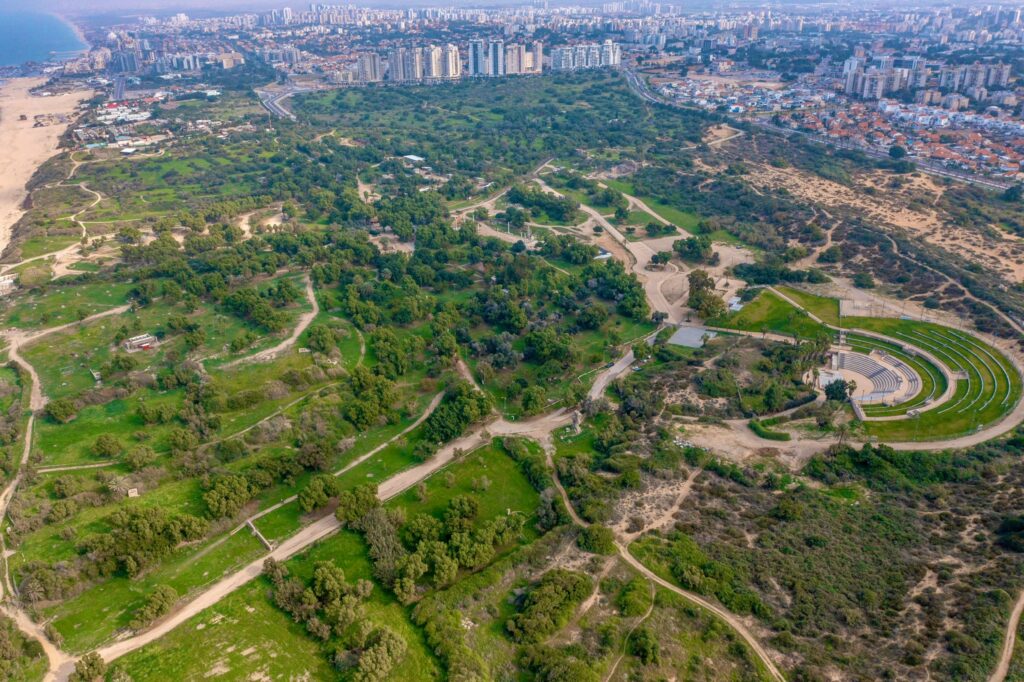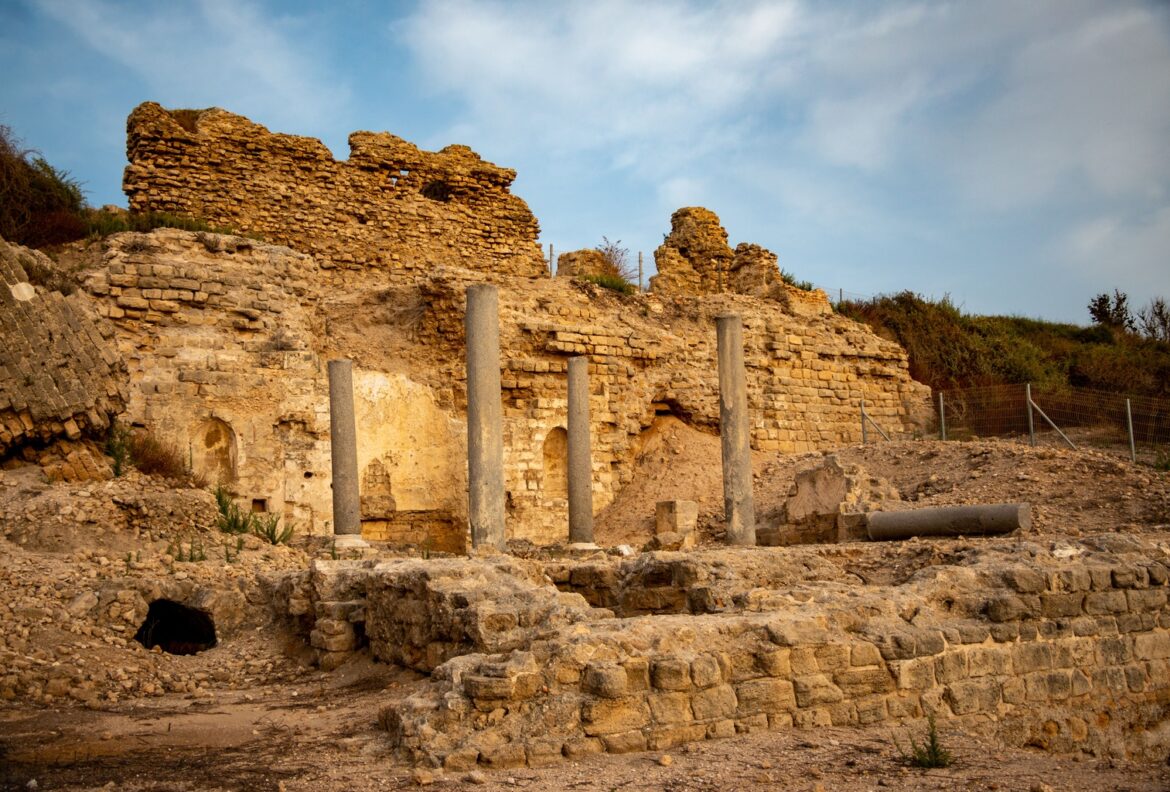Nestled along the Mediterranean coast in southern Israel, Ashkelon National Park is a place where history, archaeology, and natural beauty converge. Stretching across nearly 1,000 acres, the park is not only one of Israel’s largest national parks but also one of its most historically significant. From the remnants of ancient civilizations to expansive sandy beaches, Ashkelon National Park offers visitors a unique blend of past and present, providing a space for exploration, education, and relaxation.
Whether you are a history enthusiast eager to walk in the footsteps of the Philistines, Romans, and Crusaders, or a traveler seeking coastal leisure and natural beauty, Ashkelon National Park delivers a multifaceted experience that captivates all ages.

A City Steeped in History
Ashkelon itself is one of the oldest cities in the region, with roots stretching back over 4,000 years. It was a key city of the Philistines, mentioned multiple times in the Bible, and later came under the rule of successive empires including the Assyrians, Babylonians, Romans, and Crusaders. Ashkelon National Park preserves many of these historical layers, making it a living museum of the region’s complex past.
At the heart of the park lies Tel Ashkelon, the ancient mound that formed the city’s core. Excavations here have revealed layers of urban settlement, fortifications, and public buildings that illustrate the city’s prominence in trade, politics, and culture over millennia. Walking through the park, visitors encounter remnants of Canaanite and Philistine walls, Roman streets, and Crusader-era fortifications, each telling its own story of resilience, conquest, and adaptation.
Archaeological Highlights
Ashkelon National Park is home to an extraordinary array of archaeological sites, making it a must-visit for history lovers. Some of the most notable features include:
- The Canaanite and Philistine City Walls: These ancient fortifications provide a glimpse into the early defensive strategies and urban planning of Ashkelon. Archaeologists have uncovered massive stone walls, gates, and towers that once protected the city from invading armies.
- Roman Ruins: During the Roman period, Ashkelon flourished as a regional hub. The park contains remnants of Roman streets, bathhouses, and public buildings, illustrating the city’s strategic and economic importance.
- Crusader Fortifications: Evidence of medieval fortifications can also be found, showcasing Ashkelon’s role during the Crusader era. Visitors can explore the remains of towers, walls, and gates that once guarded the city against rival forces.
- Canaanite Burial Grounds: Ashkelon is famous for its ancient cemeteries, including elaborate burial sites from the Canaanite period. Excavations have revealed tombs, sarcophagi, and burial artifacts that shed light on early religious beliefs and funerary practices.
- Archaeological Museums and Exhibits: On-site museums and visitor centers provide context for the discoveries at Ashkelon, offering educational exhibits, artifacts, and interactive displays that make history accessible and engaging.
Natural Beauty and Coastal Attractions
While Ashkelon National Park is rich in history, it is equally valued for its natural landscapes and Mediterranean coastline. The park stretches to the sea, encompassing wide sandy beaches that attract swimmers, sunbathers, and families. Unlike some busier urban beaches, the park’s coastline offers a sense of openness and tranquility, with soft sand, clear waters, and gentle waves.
Visitors can enjoy long walks along the shore, engage in water sports, or simply relax under the sun. The park’s combination of archaeological sites and beach access is rare, allowing tourists to blend historical exploration with leisure and recreation in a single visit.
The park also features lush green spaces, walking trails, and shaded picnic areas, making it a perfect destination for families and outdoor enthusiasts. Birdwatchers will appreciate the coastal habitat, which attracts migratory birds and local wildlife throughout the year.
Recreational Activities and Facilities
Ashkelon National Park is designed to accommodate a wide range of visitor activities. Families can enjoy playgrounds, picnic spots, and open lawns for sports and games. Guided tours provide educational insights into the park’s archaeological and historical features, while self-guided trails allow visitors to explore at their own pace.
For those interested in physical activity, the park offers extensive walking and cycling paths, allowing visitors to cover both the historical sites and the scenic coastal areas. Photography enthusiasts will find endless opportunities, from ancient ruins and historic gates to sunsets over the Mediterranean Sea.
During summer months, the park often hosts cultural events, outdoor concerts, and educational workshops, enhancing the visitor experience and connecting the city’s modern life with its historic roots.
Educational Value and Archaeological Research
Ashkelon National Park is more than a tourist destination; it is also a hub of archaeological research and education. Excavations in the park have provided invaluable insights into ancient urban life, trade networks, and cultural interactions in the southern Levant. Researchers continue to study the city’s layers, uncovering artifacts and structures that span thousands of years.
Educational programs and guided tours help visitors of all ages understand the significance of these discoveries. Families, school groups, and international tourists can learn about the Philistines, Romans, and Crusaders in an immersive setting where history is not confined to textbooks but is visible in stone and sand.
Festivals and Cultural Events
Ashkelon National Park is also a cultural hub, hosting events and festivals that bring history and community together. Music concerts, traditional performances, and seasonal festivals take place throughout the year, often set against the dramatic backdrop of ancient ruins and the Mediterranean Sea.
One popular event is the Ashkelon Arts Festival, which celebrates local and international performers, from musicians to dancers. These events not only provide entertainment but also deepen the connection between the city’s historical identity and its contemporary cultural life.
Accessibility and Visitor Information
Ashkelon National Park is easily accessible, making it a convenient destination for both locals and tourists. The park is located near the center of Ashkelon city and is well-connected by public transport, highways, and parking facilities.
Visitors are encouraged to spend several hours exploring the park to fully appreciate its historical sites, beaches, and recreational areas. The park provides amenities such as:
- Visitor centers and information kiosks
- Public restrooms and picnic facilities
- Guided tours and educational programs
- Walking and cycling paths
- Beach access with lifeguards and designated swimming areas
Whether you arrive for a day trip or a longer exploration, Ashkelon National Park is designed to accommodate diverse interests and ensure a fulfilling visit.
Why Ashkelon National Park Matters
Ashkelon National Park stands out as a destination where history, nature, and modern leisure intersect. Unlike many archaeological sites that focus solely on ancient ruins, the park allows visitors to immerse themselves in living history while enjoying recreational amenities and natural beauty.
The park’s significance is multifaceted:
- Historical Importance: Preserves the ancient city of Ashkelon, a major Philistine, Roman, and Crusader center.
- Cultural Value: Hosts festivals, workshops, and performances that celebrate both local traditions and international arts.
- Educational Opportunities: Offers immersive experiences for students, families, and visitors to learn about archaeology and history.
- Recreational Space: Combines beaches, green areas, and walking paths, providing a versatile environment for relaxation and activity.
For anyone exploring Israel, Ashkelon National Park offers a unique combination of coastal beauty and historical depth, making it an unforgettable stop along the Mediterranean.
Tips for Visiting Ashkelon National Park
To make the most of your visit:
- Plan Your Day: Allocate at least 3–4 hours to explore the archaeological sites, walk the beaches, and enjoy the park’s recreational areas.
- Bring Sun Protection: The Mediterranean sun can be strong, especially in summer. Hats, sunscreen, and water are essential.
- Wear Comfortable Shoes: Exploring ruins and walking along trails requires good footwear.
- Visit the Visitor Center: Learn about the park’s history, pick up maps, and join guided tours.
- Combine History and Leisure: Take time to explore both the ancient ruins and the scenic coastline.
Whether you are an avid historian, a casual traveler, or a family seeking a day out, following these tips ensures a rewarding experience.
Conclusion
Ashkelon National Park is a treasure along Israel’s Mediterranean coast, offering an extraordinary blend of history, nature, and leisure. Its ancient ruins tell stories of Philistines, Romans, and Crusaders, while its beaches, green spaces, and cultural events provide a modern, welcoming environment for visitors.
Walking through the park, one can witness the layers of human civilization, imagine the lives of ancient city dwellers, and simultaneously enjoy the serenity of the Mediterranean shoreline. It is a destination that appeals to the mind, body, and spirit—a place where education meets recreation, and history comes alive amidst natural beauty.
For travelers seeking to experience Israel beyond its most famous cities, Ashkelon National Park offers an enriching journey that combines archaeological wonder, coastal leisure, and cultural vibrancy. It is a park that invites discovery, reflection, and enjoyment, leaving visitors with memories of a city that has witnessed millennia of human history while embracing the pleasures of the present.

